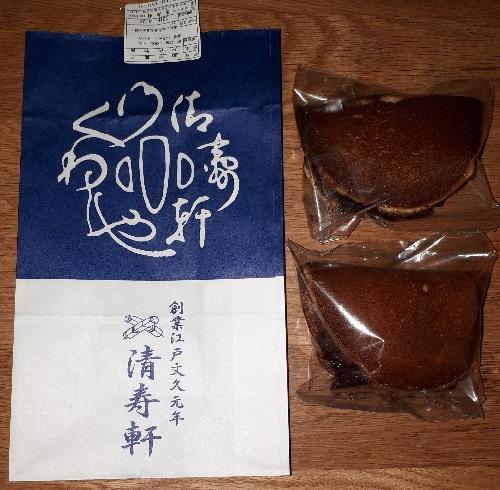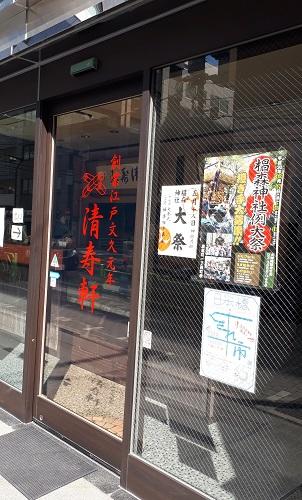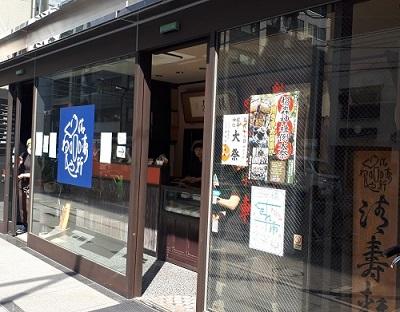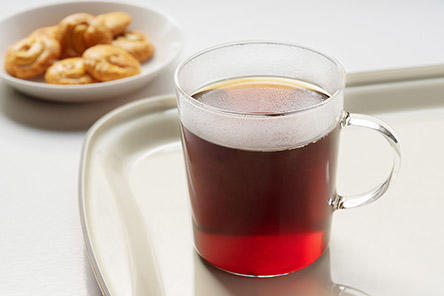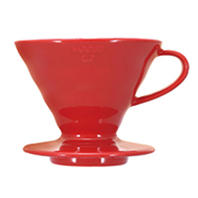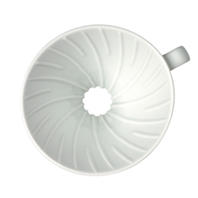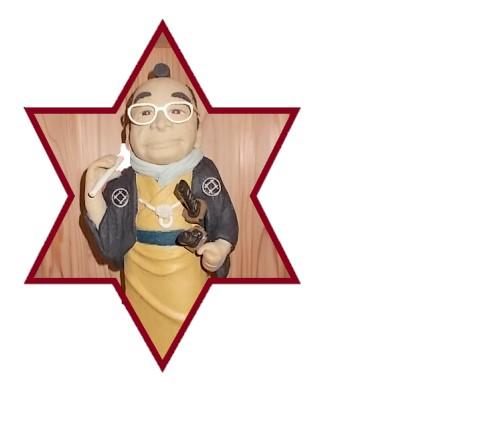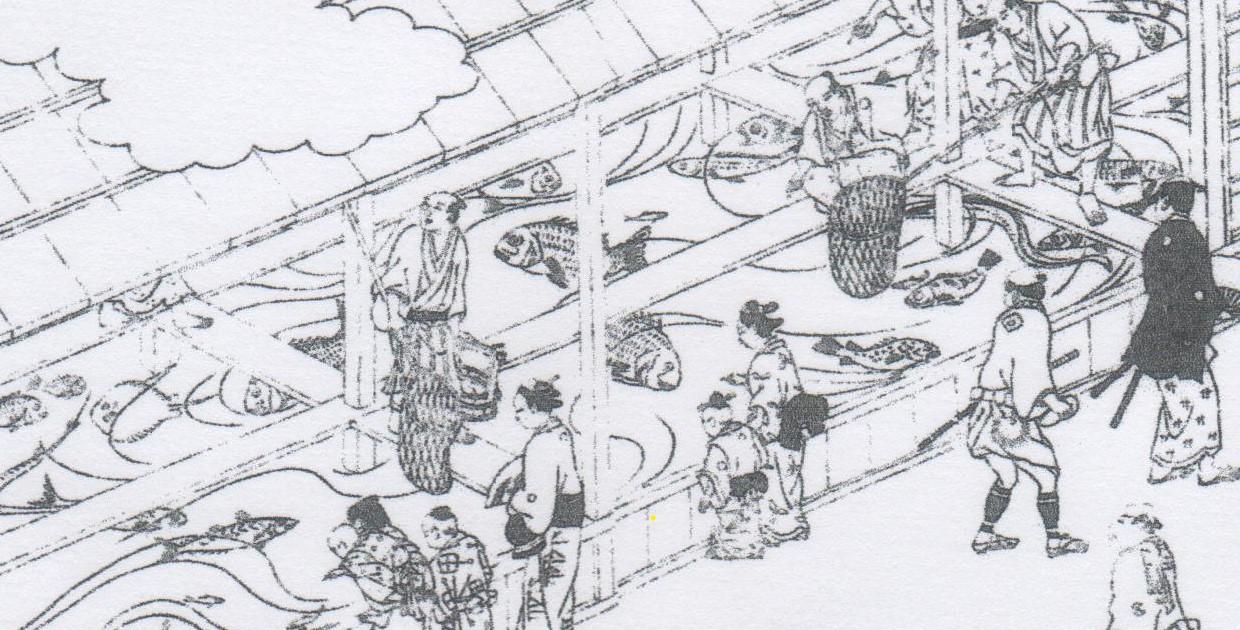From the intersection of Ginza 4-chome, pass the side of Ginza 4-chome and turn left at the intersection of 7-chome. As I walked along Hanatsubaki Street, I saw a stylish pedestrian bridge.
Today, from Ginza to Hamarikyu for the first time in a long time. But before that, there was a shop I wanted to stop by. As soon as you cross the pedestrian bridge, it is Seigetsu-do, a long-established Japanese confectionery shop.
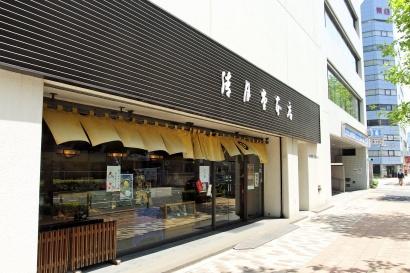
He won the present and received a voucher for Seigetsu-do's signboard product "Otoshibun". This year's Chuo-ku Tourism Certification was the 10th certification, and the tourist association was inspired. I won the present.
I'm happy. I had never eaten "Otoshibun" yet. When I entered the shop and received the prize, I received the words, "Congratulations on passing the certification."
Great prizes and warm words. Thank you very much.
Seigetsu-do in Ginza 7-chome. This area used to be called Kibikicho in the past, and Kabukiza is also close. In the opposite direction from the Kabukiza Theater, you can see the elevated highway. Turn left at the end of there and you'll find Hamarikyu. I'm going to walk there today.
On the road where the highway runs, there was once a waterside called Shiodome River. There is a central bank capsule tower building designed by Kisho Kurokawa, but looking at Sarah and turning left.
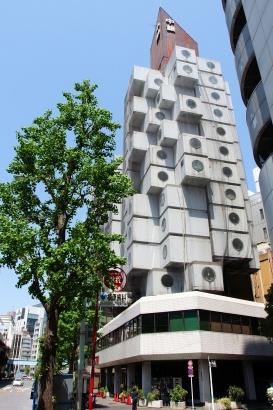
As you step forward, you will see the intersection with a traffic light. There is an old railroad crossing here.
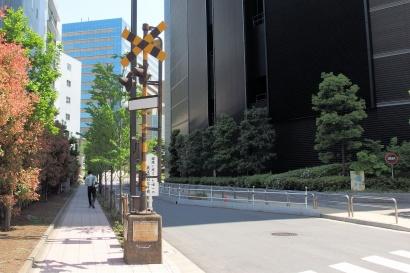
The road extending to the left is a remnant of the track. The railway was running from around Shiodome to the station in Tsukiji Market. With the passage of time, the way of logistics changed, and the railroad tracks disappeared. Without railroad crossings, it is a normal road that no one stops anymore.
Cross a large intersection and cross a stately bridge. And if you cross the gate like a castle, it is a very comfortable spring Hamarikyu. A lot of greenery surrounded by buildings. It's just an oasis in the city.
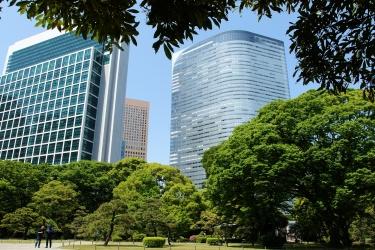
I want to see the wisteria flowers today, so my goal is "Shioiri Pond". Then, I could see a brand-new wooden building. "Hawk's Ochiya" recently restored and internally released. When you go inside, the scent of wood comes and you will be healed very much.
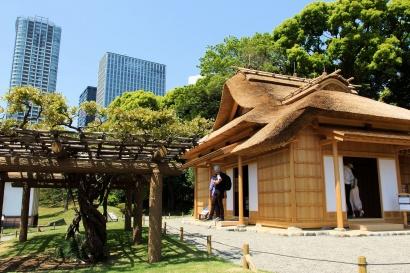
Foreigners are more serious about looking at buildings than Japanese. I imitated and looked at the ceiling so as not to lose to foreigners.
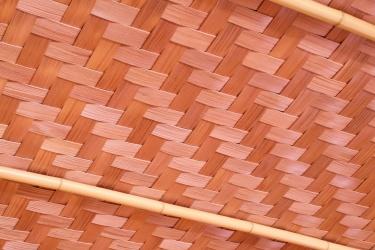
It must have taken a lot of time to make it.
In the building, commentary at the time of construction was broadcast on video. Sit in front of the monitor in a foreigner. A detailed work process that is beyond imagination. I was amazed with a foreigner.
By the way, cross the bridge over the tide pond and head toward Mt. Fujimi. I'd like to enjoy the wisteria flowers and take a break. On the way, the windy "Nakajima no Ochiya" passed by. Looking at the tea landscape of parents and children enjoying the waterside, I was a little hungry.
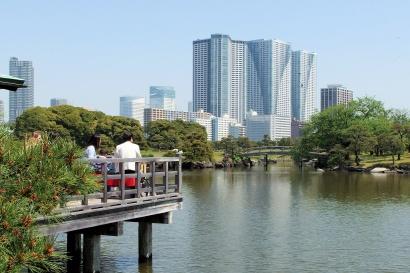
I'm sorry, but now I feel like "dango more than flower". I want to calm down on the water. When I walked to the seaside and looked for a bench, there was only one vacant.
Gokuri's tea I brought. And I gently opened the box of Japanese sweets I had earlier.
Sweet in your mouth. Elegant mellowness of yolk bean paste. It must have taken a lot of time to make it. I wish I could open it a little more windy.
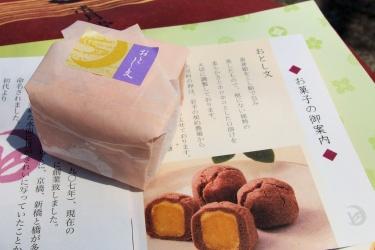
"Seigetsu-do" was founded in Meiji 40 (1907). If you look at the explanation, the origin of the name is like this.
"There are many bridges near Kyobashi and Shimbashi near the place of founding, and the moon was beautifully reflected on the surface of the water seen from the bridge. ]
Yes, a windy moon viewing is something that enjoys the moonlight reflected in the water. Chuo-ku used to have a lot of watersides. The name of the shop was derived from the windy waterside landscape.
In addition, the name of the sweets called "Otoshibun" is also meaningful.
An insect called "Otoshibumi" came to my head. Otoshibumi has the habit of rolling leaves into a cylindrical shape and dropping them on the ground. A letter that deliberately drops and picks up near the person who wants to convey his thoughts is called "dropping sentence". That's why it's called Otoshibumi.
I thought the origin of the name of this sweet was the same. But it was a little different.
"Once upon a time, there is a story that a woman who fell in love with a different samurai family made an unbearable feeling in love, but did not give it to him, rolled it and flowed it to the river. Our representative famous confectionery "Otoshibun" is an elegant sweetness and a loose mouth melting. ]
The thoughts contained in this sweet were less painful than I was floating on my head. The image of the rounded shape after giving up is a ball shape rather than a cylindrical shape. It is similar to the appearance of this sweet. Do you feel like you throw it away rather than drop it?
"Otoshi sentence."
Just like the name of the shop, it was a sweet with a style name that looked good on the waterside. I would like to have it at the waterside even during the moon viewing.
Well, a little wind came out, so I left the bench to get home soon.
Hamarikyu also has sightseeing boats. I see off the red ship at the "General's Upground". There's a little wind, and it's sure to be fresh on the boat.
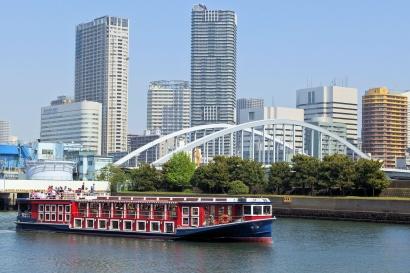
The way back from here, parallel to the waterside.
Actually, I'm always looking forward to this return. Walk carefully, thinking that you might be able to meet you today.
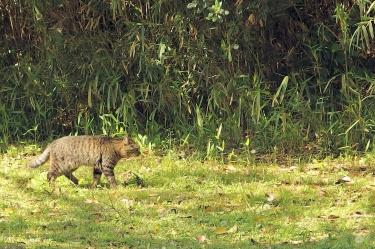
It's a fun spot because you can often meet cats. Today, I was able to meet two cats. It was a very good day.
I was taking a nap. Hamarikyu in spring, where cats are comfortable .
.
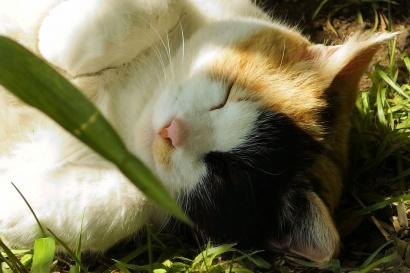
And from now on, early summer. It changes to the season when Otoshibumi drops love sentences.
(Date of interview, April 21)











